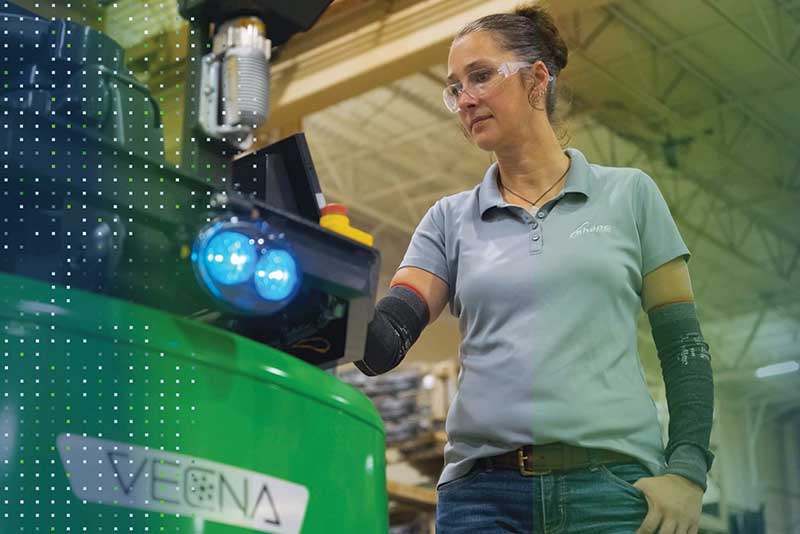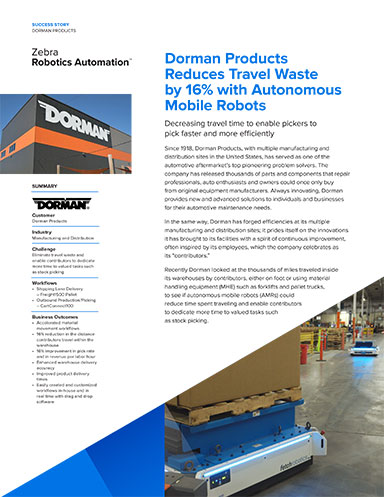High-capacity AMRs take on tough challenges
Autonomous tuggers based on AMR technology helped automotive supplier Shape Corp. take on the persistent labor shortage and efficiently move materials.
When labor is tight and supply chains are under pressure to hit shipment commitments, leading companies such as Shape Corp. are tapping automation to ensure a reliable flow of production and make the most of the skilled labor available to them.
With the past few years characterized by pandemic-influenced supply chain bottlenecks, labor shortages and high prices, operations are struggling to keep up with demand.
Michigan-based Shape Corp., a Tier 1 global supplier of automotive and industrial components, faced surging demand and the same labor availability challenges faced by many industries during the pandemic, so it looked for ways to address these challenges with automation.
In particular, Shape evaluated large-format autonomous mobile robot (AMR) solutions to bring efficiencies to materials transport tasks.
Shape selected a large-format, high-capacity AMR solution (Vecna Robotics) that acts like a manually operated tow-tractor or “tugger,” but it navigates and runs autonomously.
Shape deployed Vecna Robotics’ Autonomous Tugger (ATG) units to replace the use of manual tuggers for repetitive transport tasks. The ATG is Vecna’s fork-free tugger built to handle high-capacity, high-throughput pallet moves and navigate tight, narrow aisles while increasing storage density. For Shape, the solution replaces use of manually operated tuggers, which had previously consumed an operator’s time for each mission.
The ATG was introduced to Shape’s production plant in a picking and put-away loop between the plant’s “supermarket” inventory area and various warehouse destinations. Three vehicles are currently in use, with plans to deploy two more by the end of this year.
“Currently, how we utilize the robots here is we have an area in the plant with a bunch of welders that we’re supporting with the AMRs,” says Amy Karentz, Shape manufacturing engineer. “So, we developed a supermarket area that has all the inventory and all the containers needed to support that section of the plant, and the AMRs will travel in a loop around that section of welders delivering containers, and then they’ll go back to the supermarket.”
At the supermarket, the AMR expert loads up all the containers needed based on what’s listed on the AMR’s whiteboard, and then they will dispatch it. They’ll program what stops it needs to stop at and send the AMR on its mission. Once the AMR arrives at its destination, the floaters working in the area pull their containers off and then put their empty containers on, and all they need to do is hit the done button and the robot will continue on its mission, added Karentz.
Shape says its workers find the AMRs integrated easily into existing systems and also positively changed operations. With surging customer orders and high employee turnover, automation has proved to be a reliable resource that frees employees to focus on more fulfilling work instead of dangerous, monotonous pallet handling better suited to robots. The solution not only helps mitigate labor shortages, but it also makes for a more repeatable and reliable line-side replenishment process.
“The autonomous system has provided us with stability,” says Ryan Mapes, Shape’s production supervisor. “We’re not relying on another team of people to provide us with what we need.”
With the pandemic creating concerns about maintaining a consistent workforce, the tuggers ensure future labor concerns can be buffered against. In addition, Vecna’s ATGs can be quickly implemented to autonomously perform on-demand lineside replenishment, long-distance high-throughput hauling and non-conveyable transport at sortation hubs all while keeping employees and goods safe. Additionally, any questions or concerns have been swiftly resolved by Vecna’s customer service team.
Between increased throughput and easy implementation, Shape has already decided to expand its fleet within the first year. Based on its success, Shape plans to expand its fleet of AMRs beyond its current inventory and hopes by 2026 or 2027 to have AMRs everywhere in the plant, in production areas and higher loads in shipping areas for shipping and receiving.
“The goal is to keep manually operated forklifts only in areas specified,” says Karentz.
Mahesh Nikam, Shape’s excellence systems manager, sums up the flexibility of the AMRs as offering “a versatile platform that complements deployments and continuously tackles new use cases.”












